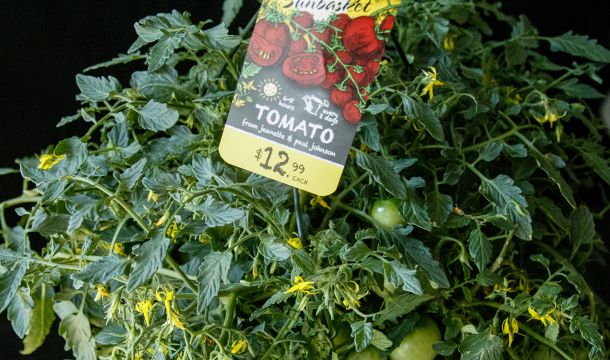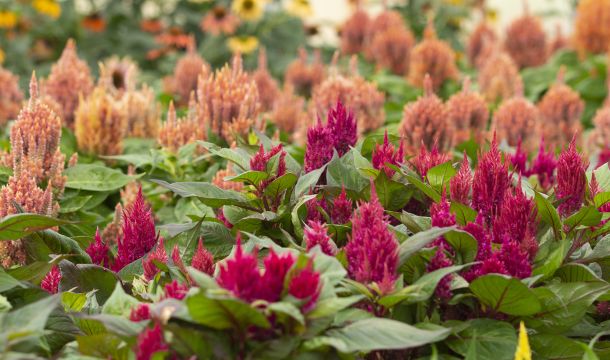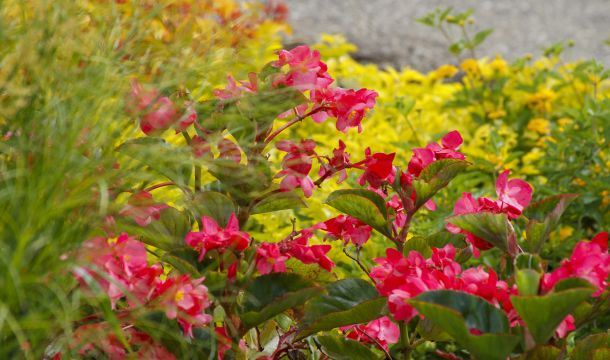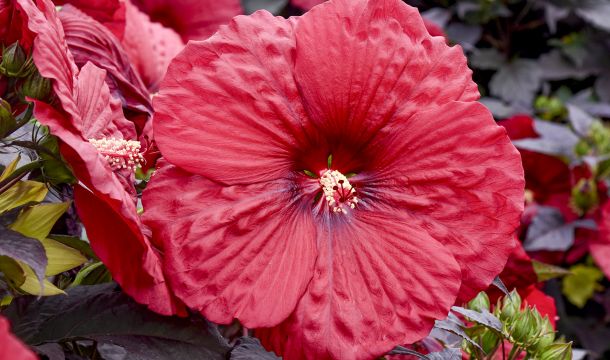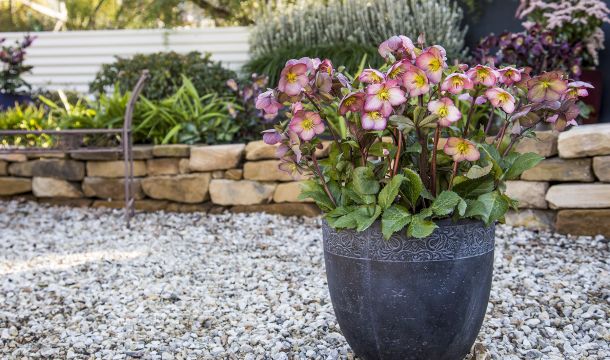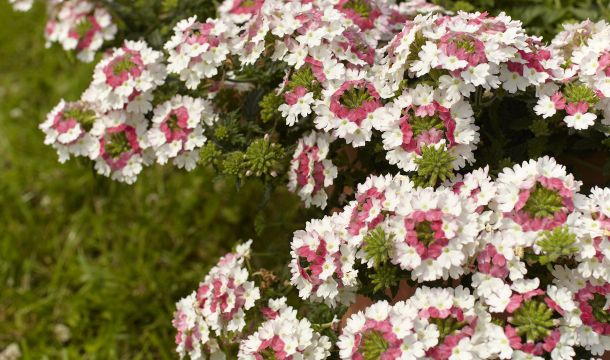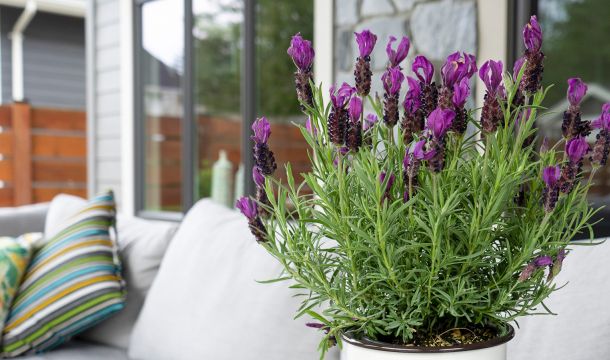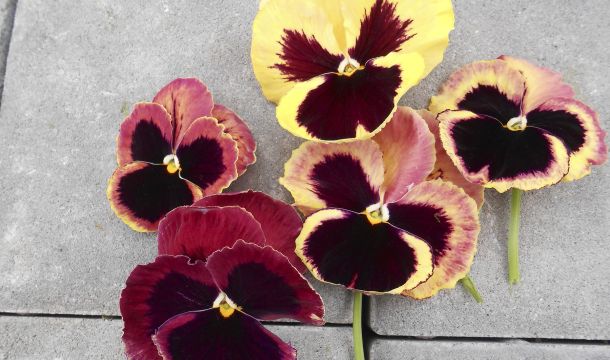The Market Structure of Vinca
Vinca series often deploy as fraternal twins, upright and spreading. Think Cora | Cora Cascade and Titan | Mediterranean. They emerge from the same breeding teams with the same philosophies, so they are often lumped together in discussions.
Trailing vincas work well in baskets, but they also knit together into a solid bed, covering the soil. Vincas in baskets also received a boost from the impatiens downy mildew crisis about a decade ago. I never saw vinca baskets back then because Super Elfin did the job so well. These days, a vinca basket has the impatiens look, just as many colors, and the carry-through for high summer. Super Elfin got shelved.
Today’s vinca sales are driven by two primary forces: commercial plantings and Southern work. It’s the nature of vinca’s impatiens-like flowers to be tied to the larger impatiens market. Seen as the full sun/hot weather work-alike, vinca operates on the fringes. It has to wait for the soil to warm up so it’s the last of the major spring crops to ship. That’s a Northern point of view.
Southern thinking reverses this pattern. Vinca is the default because “the hotter, the better.” Landscapers plant in most months and for them the color range is good enough. Vincas are tough, durable, and low-maintenance*. Impatiens is the work-alike that’s deployed around the edges when vinca won’t do, like in heavier shade or colder months.
These Coras show the difference between the two sister series. Cora Cascades dangle, while the Cora standards are upright. Nearly all the colors have migrated into the XDR (Extreme Disease Resistance) except for the Cora Red. The dangling nature of the Cora Cascades make them good landscape choices, as the plants will knit together into a solid bed to cover the soil.
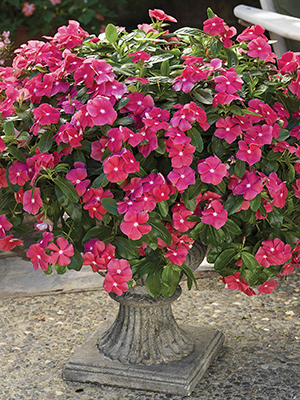 |
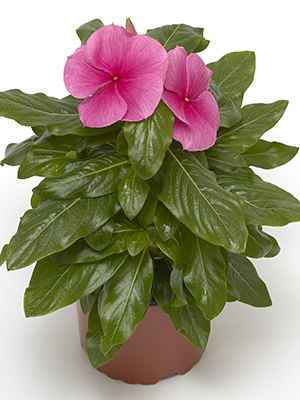 |
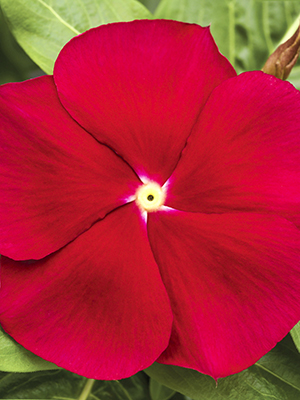 |
| Cora Cascade Cherry XDR | Cora Deep Strawberry XDR | Cora Red Classic |
Cora & Cora Cascade XDR
The (*) in the ointment is Phytophthora, a fungal-like disease that spreads in wet, hot places like the US Gulf States. More tornado than sustained hurricane, its virulence is tied to the local conditions. It fires up hot spots and destroys a lot of small areas intensely.
This is the nut XDR cracks. Cora | Cora Cascade builds eXtreme Disease Resistance by collecting many strains, then integrating improvements into its colors through a rolling cycle of high-count innoculation trials to stay ahead of the disease pressure. The series has earned a reputation for having the best Phytophthora resistance in the business, and many Southern landscapers use nothing else. Once bitten, twice Cora XDR.
Titan's strength in the market comes from their color selection and consistent habit, built over two decades. This year, the series will start a migration into the Titanium series with improved disease resistance. Mediterranean is the cascading version of Titan, sharing the breeding team's interest in extra colors.
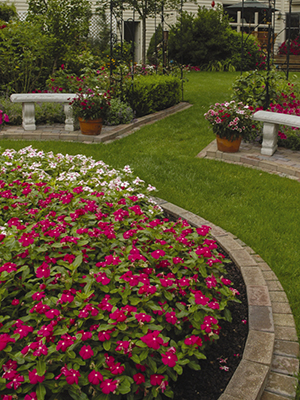 |
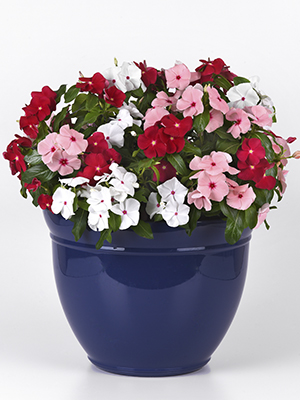 |
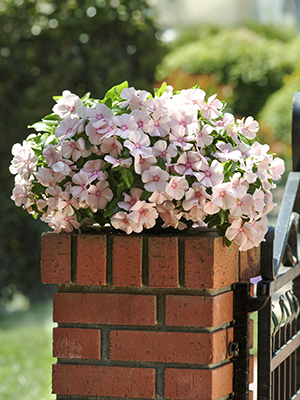 |
| Titan Rose with Polka Dot | Titan-ium Mix | Mediterranean 'Peach' |
Titan, Titanium & Mediterranean
That quirky hot spot nature of Phytophthora also explains why Titans and their kin can ship mountains of seed annually. Large chunks of the country, to the north, west and even in some southern places, don’t need extreme disease resistance. Titans have the natural vigor of F1 hybrids, bringing a strategy of extra healthy to disease resistance. In essense, it can outfight attacks and outgrow the damage, especially if the spore density isn’t that bad.
Titan’s commercial success comes from its broad color range, tight blooming window, and even habit. It’s consistent to the extreme. Cora walked back from this bar in exchange for that extra XDR protection. Titan walked back from extreme disease resistance to get better color selection.
No series is complete, however. A common industry habit is to base the bulk of a vinca program on one series, then poach the missing colors from another series. This habit encourages the Coke/Pepsi reputation of Cora and Titan. They look awfully similar, but differences do exist.
This April, Titan-ium (with the hyphen) launched as an upgraded version of Titan, starting with seven colors. Running through a core innoculation program of its own, Titan will migrate into Titan-ium over the next half decade or so. During the transition the two series will exist side-by-side. You can swap them out interchangeably because they have the same habits and protocols.
The Blockbuster series is an F1 series tweaked for the production needs of northern growers, or year-round growers that need to deal with the dark skies and short days of starting a vinca crop in late winter and early spring. The product manager is particularly pleased with the calibre of the blue.
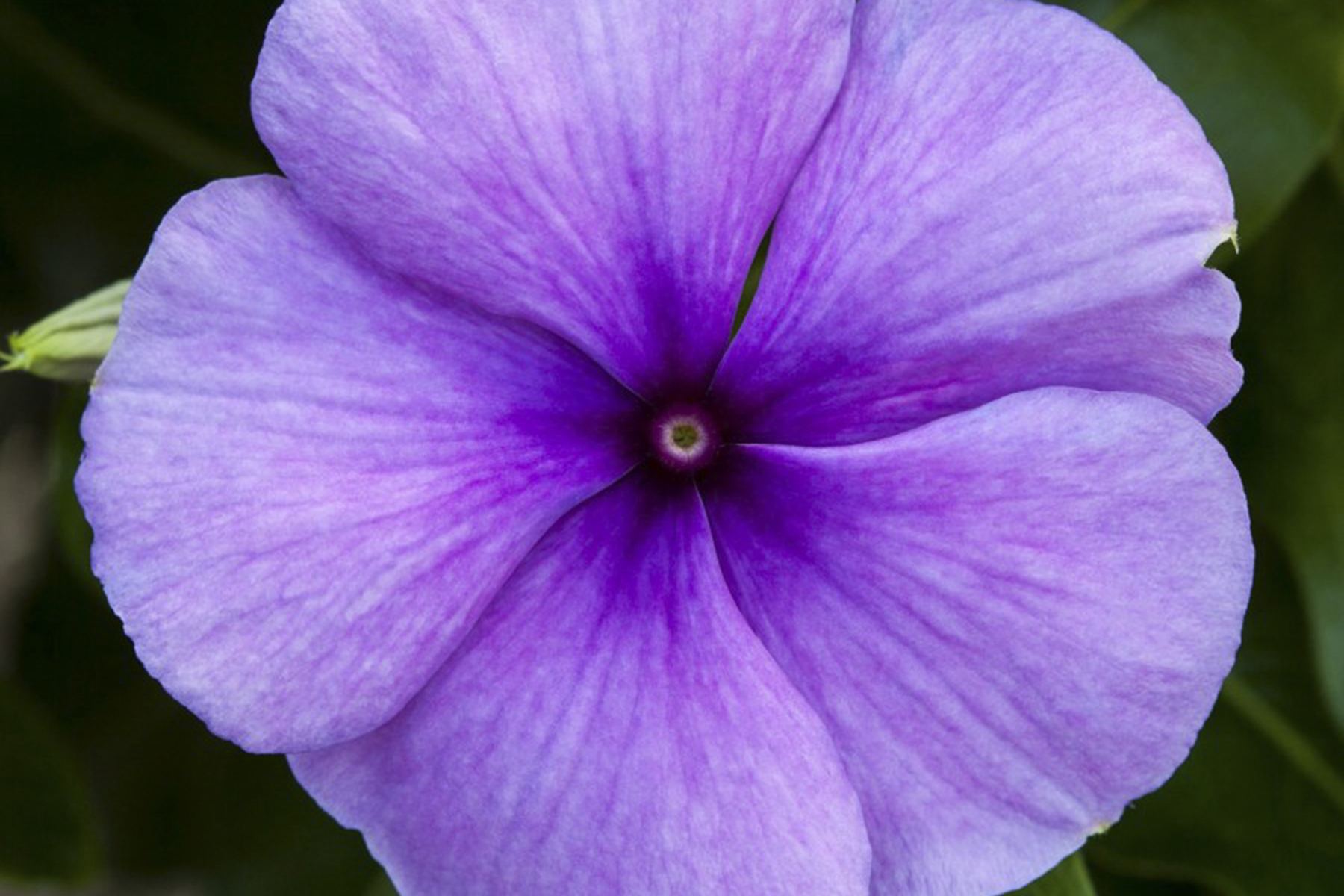
Blockbuster 'Blue'
Blockbuster—The Northern Vinca
A competing F1 hybrid is the Blockbuster series, optimized for suboptimal growing conditions found in the North. Early season sowing is necessary to meet early summer sales, but the schedule pushes starts into less than ideal shorter days and darker skies. Heat is expensive so, if you have to pump it, you want strong results for the money you spend. As an F1 hybrid, Blockbuster brings better germination rates than open pollinated varieties. An interesting color note here is Blockbuster Blue, one of the strongest blues I’ve seen in a vinca. Blockbuster's Red, Red with Eye, and Dark Red are also highly regarded.
Open pollinated series like Sunstorm, Pacifica and Victory handle the high volume, low margin end of the business. They eschew fancy features like disease resistance and crop crop consistency in exchange for XPP (Extreme Price Protection). The cost delta can be signficant, especially if you just need a basic vinca to grow in a crop tight configuration like packs and small pot trays.
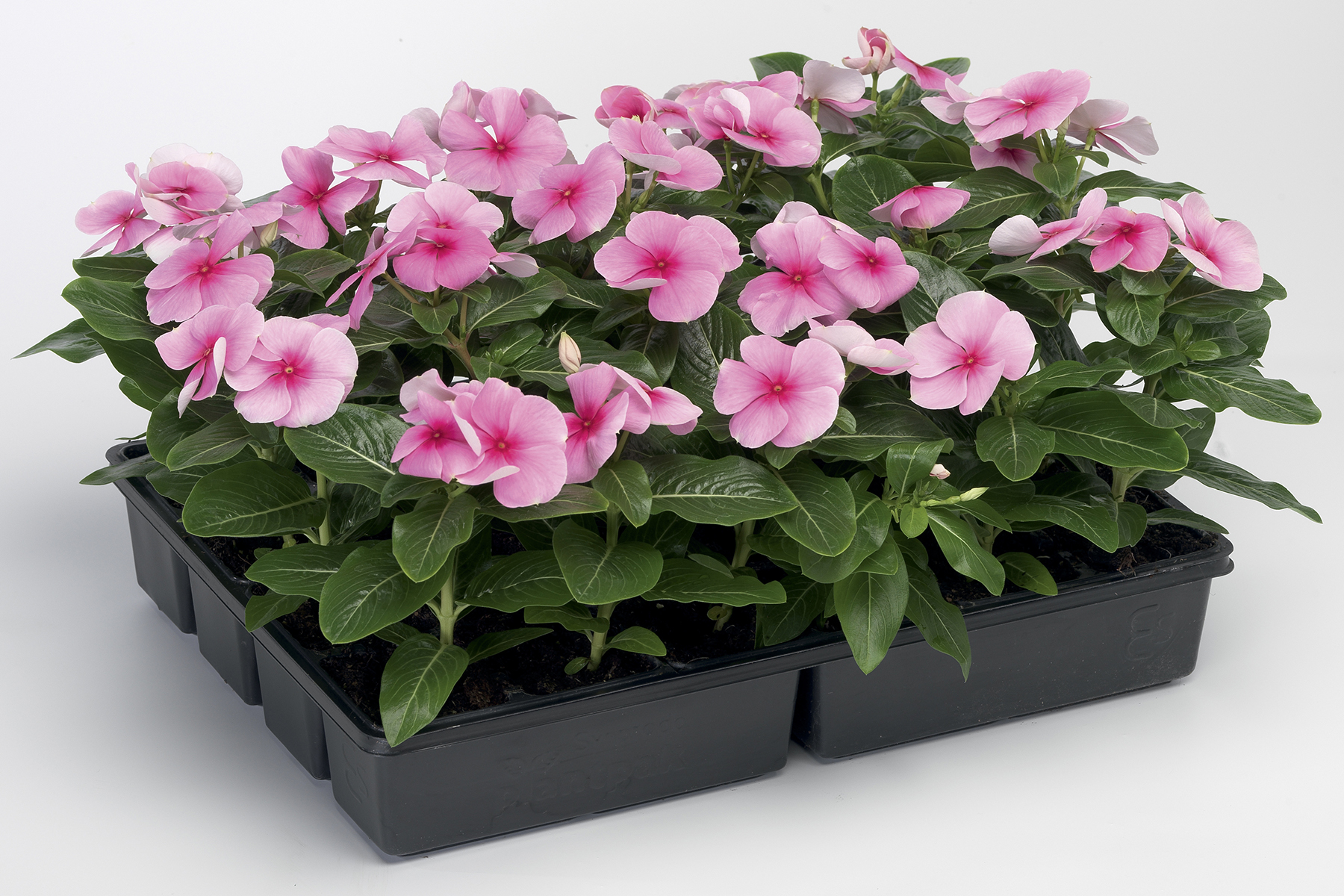
Sunstorm 'Blush'
Open Pollinated Series
Open pollinated series like SunStorm, Pacifica, and Victory function as the economy model vincas. They cut costs by working directly with the bees rather than leaning on hand pollination to control for unwanted crosses. This results in a good standard vinca but without the enhancments of XDR, the color range of Titan, or any Suntory fancifulness. These series are built for pack production where high volume/low cost controls the purchase order.
Vinca is new to the decor business, but several series put in a series effort. On the left is a good example of Soiree 'Kawaii White' viola-style strategy of small flowers, but tons of them. In the middle is the flamboyant Soiree Flamenco 'Salsa Red' with very large flowers. On the right is another large flower series, Nirvana Cascade Pink Swirl with a swirling center.
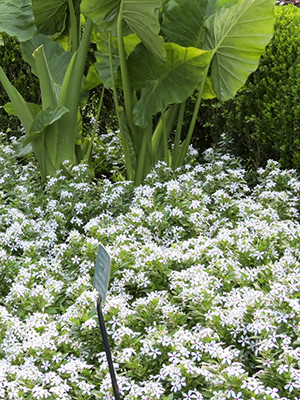 |
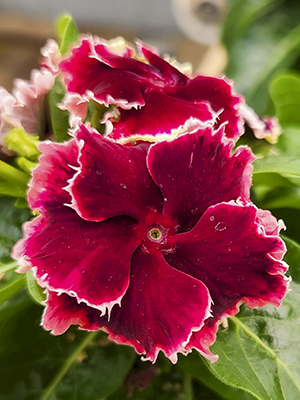 |
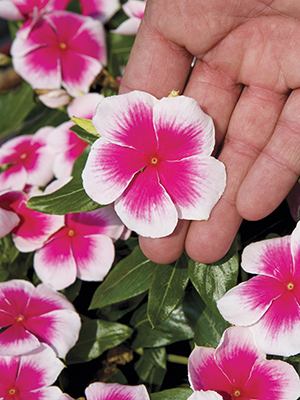 |
| Soiree 'Kawaii White' | Soiree 'Flamenco Salsa Red' | Nirvana Cascade 'Pink Splash' |
Decor Series
This past decade has seen the rise of the decor vincas, lead by Suntory. Southern Japan is just as hot and humid as the American Deep South, but the Japanese brought a different sensibility to the vinca game.
- Soiree Kawaii: small blossoms with heavy color coverage over the top. This is the same strategy taken by violas to generate a carpet of color with very little green peeking through. It’s very good as filler in a container.
- Soiree Flamenco: showy, fancy peacock-style blossoms. Generally bigger blooms are filled with ruffles, swirling colors, or sometimes both.
- Soiree Doubles: the classic doubling of petals. Blooms all sit vertically on the stem.
Japanese breeders aren’t the only ones bringing showy stuff to the market. In the Tattoo series from PanAmerican, saturated colors have dark centers. Tattoo Black Cherry is particularly striking, with staining that swirls outward to the petal edges.
Another series, Nirvana, is made up of interesting characters. These are Cora colors that didn’t pass their seed purity tests, but the individual plants work very well in the URC market. They feature designer colors not normally associated with vinca, like Nirvana Blackberry and Nirvana Cascade Pink Splash.
Correction: Fleming Brothers worked out of Lincoln, Nebraska, not Oklahoma as I stated in the column for Dark Leaf Hibiscus.
Popular Articles
